There’s a quiet moment I look forward to every fall. The house is still, the kids are finally off to school, and I step outside with my coffee, letting the cold air wake me up. And every time, I’m surprised by how steady my Lacinato kale stands there.
Learning how to grow Lacinato kale has been its own kind of winter lesson for me — a reminder that some things grow their strongest roots when life slows down.
Frida used to say, “The plants that stay through the cold are the ones you learn the most from.” I didn’t believe her when I was young. Now I think about it every time I run my hand along those dark, quiet leaves.
In this guide, you’ll find everything people tend to search for: how to grow Lacinato kale, why kale tastes better after frost, what makes Lacinato kale nutrition special, whether it’s healthier than curly kale, and how these leaves support the immune system, inflammation, and our winter bodies.
But mostly, I hope you find a little calm here too.
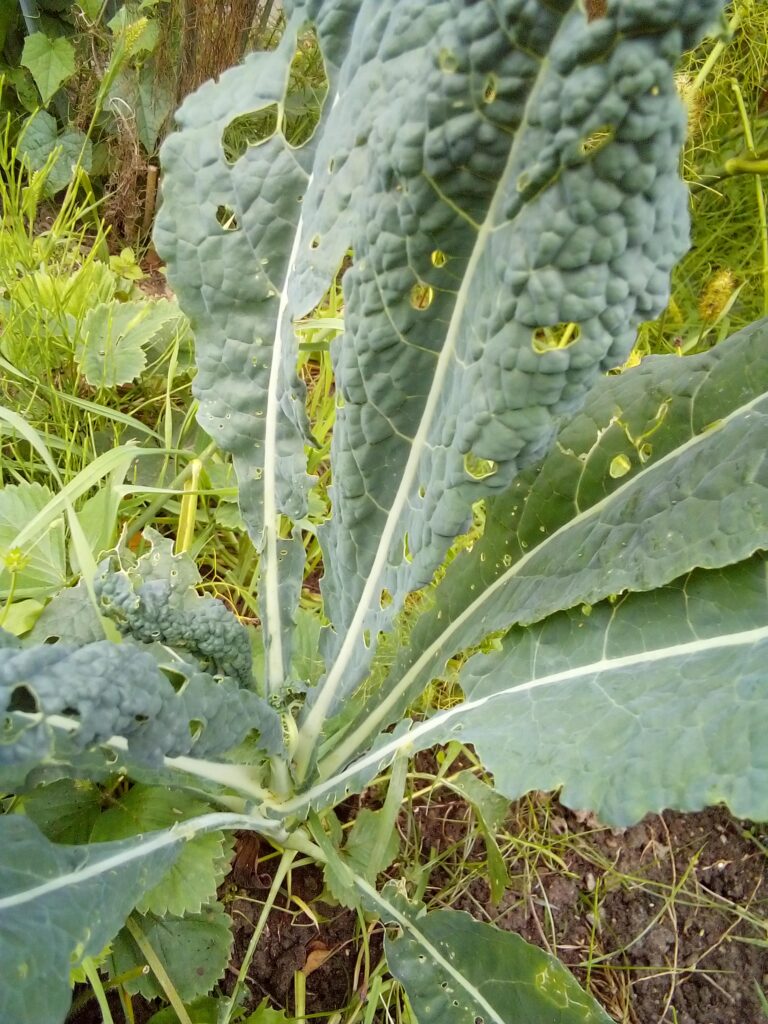
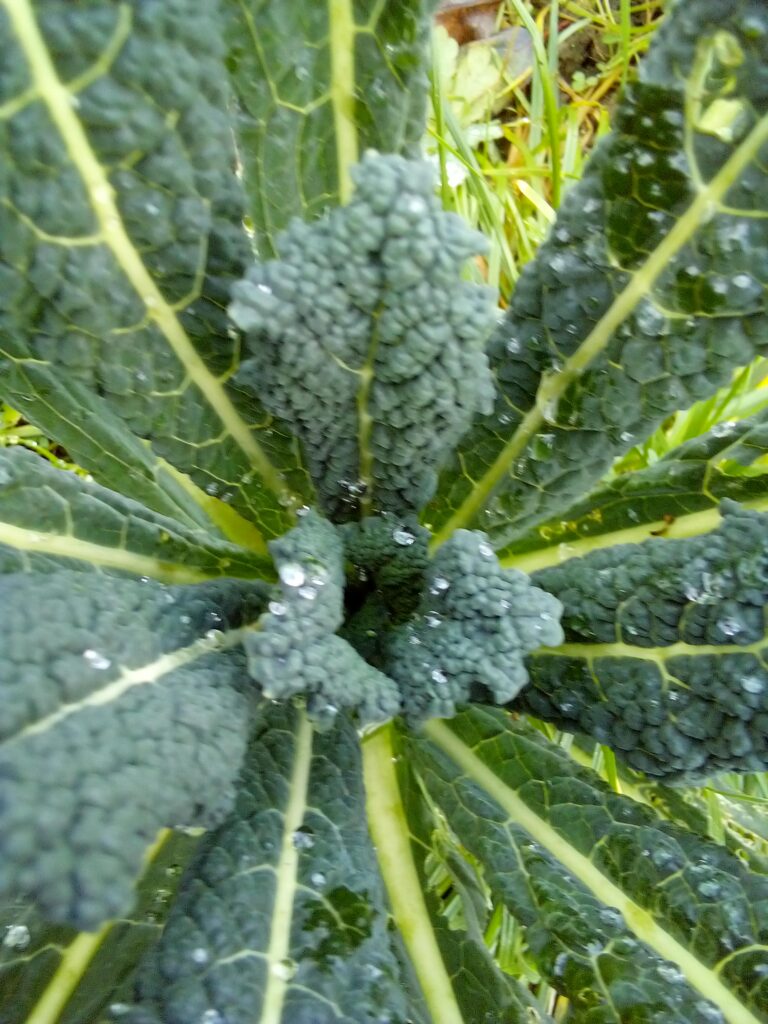

What Is Lacinato Kale
Lacinato kale is the tall, dark, blue-green kale you may have seen in winter markets. Some call it Tuscan kale, some call it dinosaur kale. Frida called it “the winter palm,” but she had names for almost everything.
People often search “what is Lacinato kale” because it looks different from curly kale. The leaves are longer, smoother, almost leathery. And its personality is different too — milder, sweeter, more grounded.
If curly kale feels like summer energy, Lacinato kale carries winter’s quiet strength.

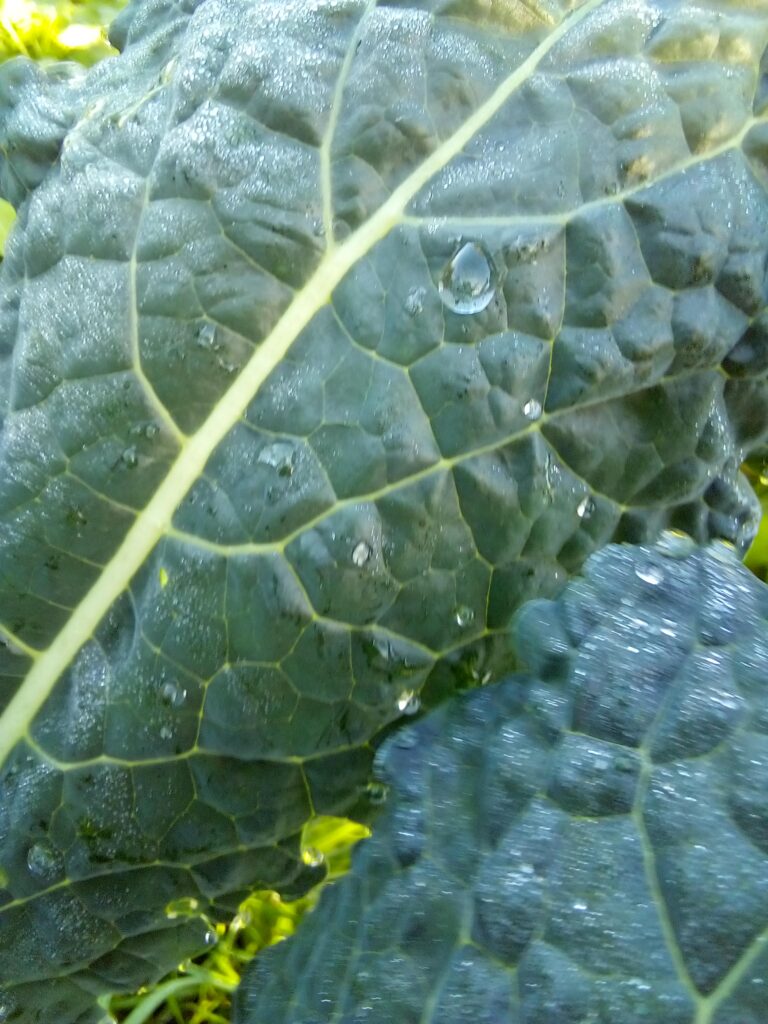

How to Grow Lacinato Kale
Frida used to tell me, “If you want to grow calm, grow the plants that grow slowly.”
Lacinato kale is exactly that — steady, patient, not demanding much. Perfect for anyone gardening with only a few hours a week.
Planting
I’ve had the best luck sowing seeds in early spring and again in late summer. For winter harvests, late August through September is ideal. People often search winter gardening tips around this time, wondering what’s still worth planting. Lacinato kale always makes the list. And if you’re looking for open-pollinated seeds—the kind you can save and replant season after season—I added a simple example from Amazon.com that stays true and grows beautifully.
If you want to dive deeper into why I choose open-pollinated varieties and where to find them here in Germany, I wrote a full guide you can read here on my Blog Post.
Soil and Sun
This kale loves full sun but still grows in partial shade.
Loose soil with a bit of compost is enough. Nothing fancy.
I’ve grown it in raised beds, tucked between herbs, and even in a forgotten pot by the back door. It doesn’t complain.
Spacing
Give each plant room, about 12 to 18 inches (30 to 45 centimetres). Think of it like leaving space for shoulders to soften and expand.
Watering
Consistent moisture keeps the leaves tender, but if life gets busy for a week or two, the plant forgives you. I’ve tested this unintentionally many times.
Winter Care
This is where people are often surprised. Lacinato kale survives frost, snow, even windy cold. Sometimes I find it standing taller after a freezing night than it did before. It handles temperatures as low as about 10°F (-12°C).




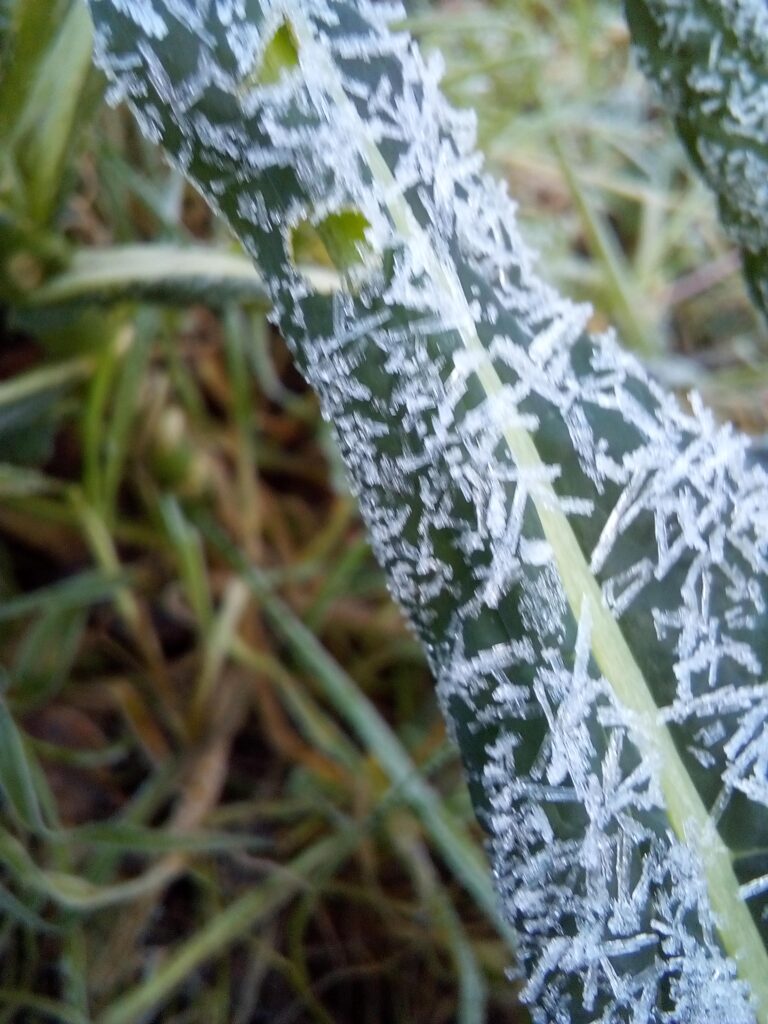
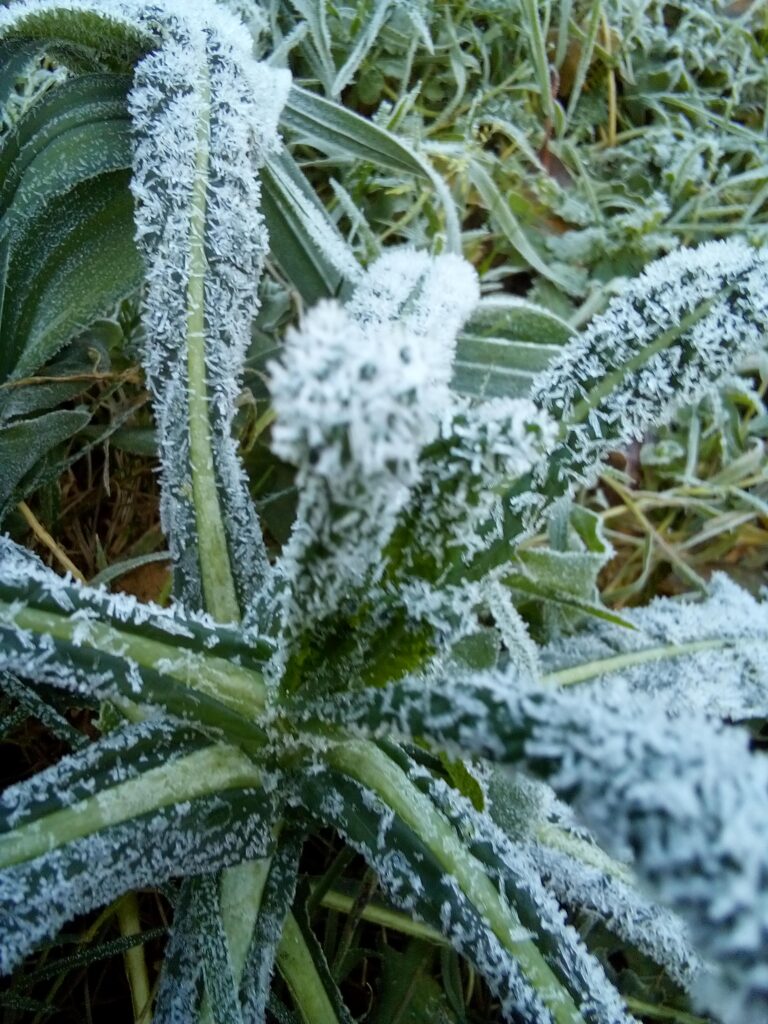
You can mulch the base, but honestly, half the time I forget — and it still pulls through.
Harvesting
I harvest from the bottom up, a leaf or two at a time. Small leaves for raw salads, big leaves for soups or kale chips.
You don’t need a system. Just pay attention. The plant tells you when it’s ready.


Does Kale Taste Better After Frost
Every year someone asks me this, and every year I tell them the same thing: yes. Absolutely yes.
The frost changes the plant. Starches turn into sugars. The bitterness softens. People who search “does kale taste better after frost” usually want the science. And it’s true — cold triggers sweetness.
But honestly? You understand it best the first time you taste a leaf early in the morning after a freeze. Frida once said, “Some things only reveal their sweetness after the cold.” She wasn’t talking about kale, but it fits.


Lacinato Kale Nutrition
Sometimes I sit at my kitchen table and marvel at how something so humble can hold so much.
When people search “Lacinato kale nutrition,” they’re usually looking for numbers. But I like thinking in feelings.
Still, here are the things inside these dark leaves:
- Very high in Vitamin K, which supports bones and blood health
- Rich in Vitamin A for vision, skin, and the immune system
- Contains Vitamin C, gentle but steady
- Good amounts of iron, calcium, manganese
- A deep antioxidant profile — this is where the dark color comes from
It’s one of the most nutrient-dense winter vegetables. Something the body seems to understand intuitively.
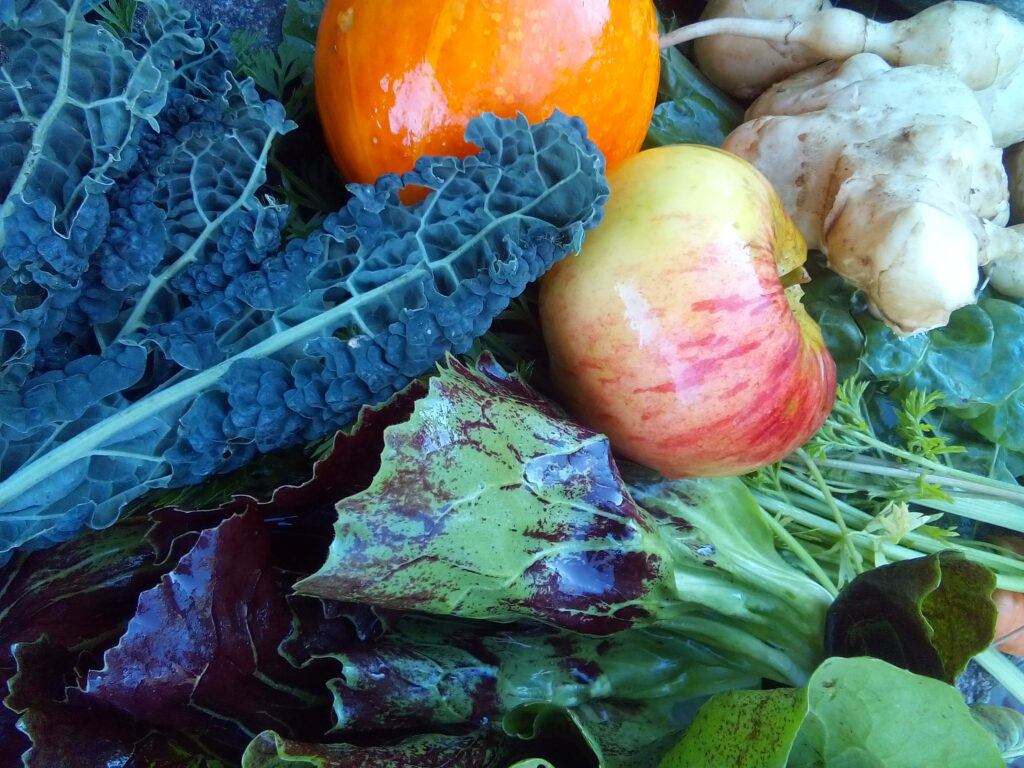
Is Lacinato Kale Healthier Than Curly Kale
People search this a lot — “is Lacinato kale healthier than curly kale” — as if one should win.
But they’re good in different ways. Still, Lacinato does offer some unique gifts:
- It’s less bitter
- Easier to digest raw
- Often higher in antioxidants
- Holds its texture better in soups
- Sweeter after frost
- More winter-hardy
If curly kale is enthusiasm, Lacinato kale is wisdom.

4 Benefits of Lacinato Kale
1. Immune Support
Those searching “is kale good for the immune system” will be relieved.
The Vitamins A and C in Lacinato kale support immunity naturally — nothing loud or dramatic, just slow, steady strengthening.
2. Anti-Inflammatory Properties
The antioxidants and polyphenols in these leaves place Lacinato kale among the quiet but powerful anti-inflammatory vegetables.
When my stress is high and I feel it in my body, this is one of the greens I reach for.
3. Vitamin K for Bone and Blood Health
If someone searches “vitamin K foods,” Lacinato kale always shows up.
This nutrient supports bone strength and healthy blood clotting — things we rarely think about until we suddenly do.
4. Gut Health
Because the leaves are softer than curly kale, Lacinato kale is easier on digestion. Raw, massaged, lightly steamed — it works in so many ways. And if you’re exploring more gentle, gut-friendly vegetables, green asparagus is one of my quiet favorites. I wrote about it here, if you want to wander a little further: Green Asparagus for Gut Health – A Natural Prebiotic
How to Use Lacinato Kale
A few things I love in my winter kitchen:
- Massaged raw kale salad with lemon and olive oil
- Tuscan kale and white bean soup
- Garlic-sautéed kale ribbons
- Lacinato kale chips (they crisp beautifully)
- Smoothies with gentle, earthy flavor
- Fermented kale strips for gut support
Frida used to say, “A leaf tastes different when you give it your attention.”
That’s true in the kitchen as much as in the garden.
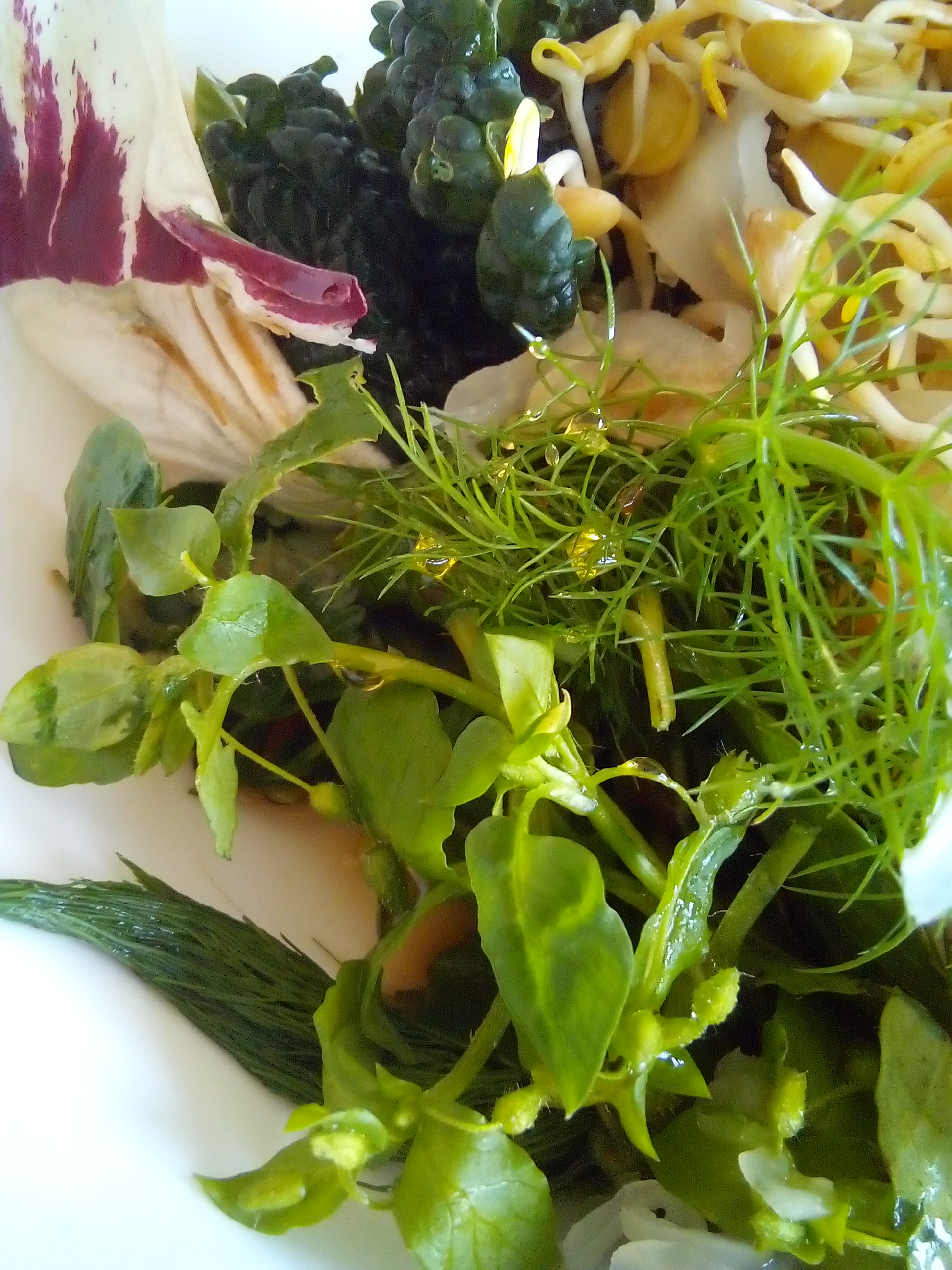
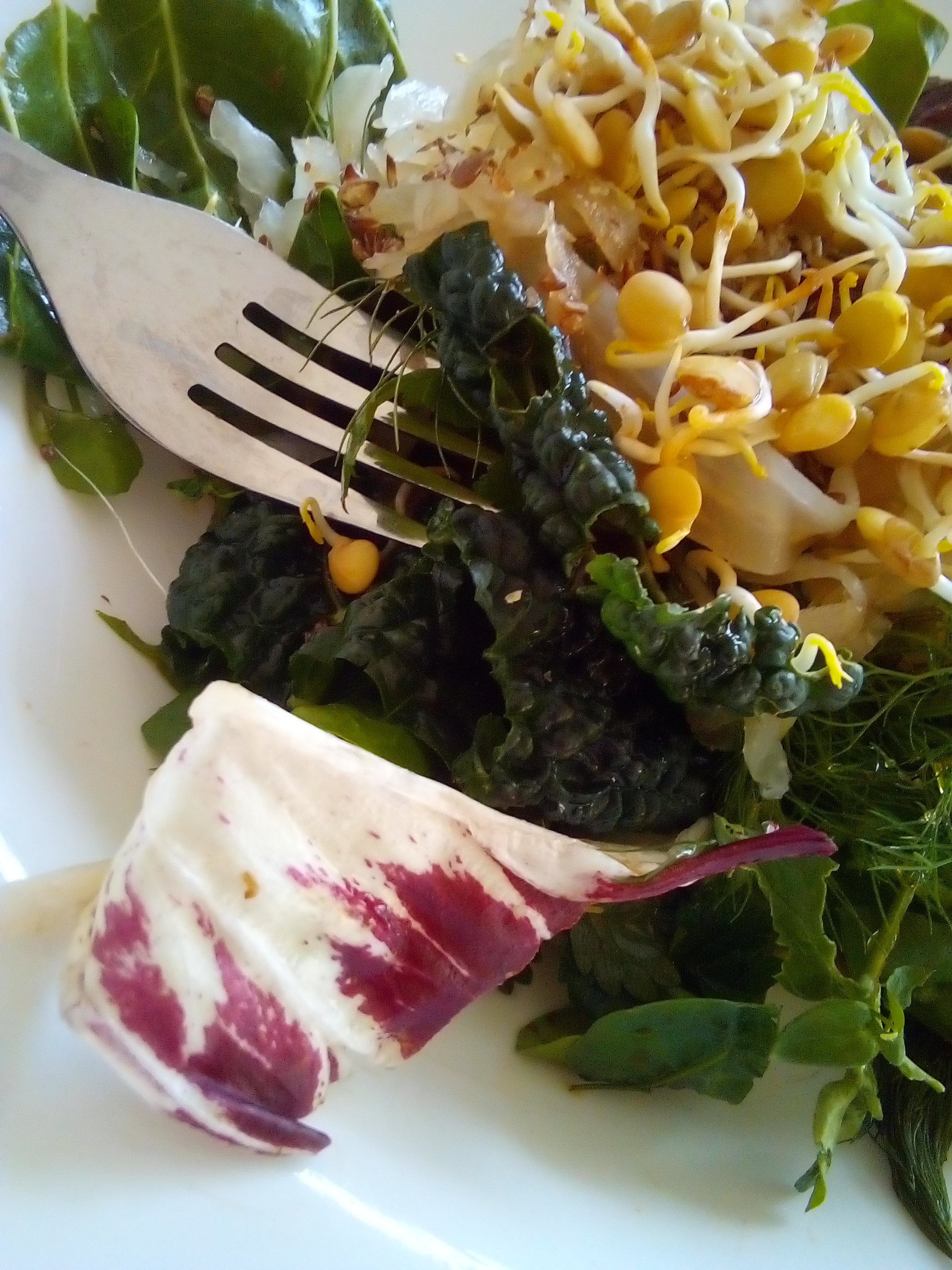
FAQs About Lacinato Kale
Does Lacinato kale survive winter?
Yes. It is one of the most frost-tolerant leafy greens and can survive well below freezing temperatures.
Why does Lacinato kale taste sweeter after frost?
Cold temperatures convert starches into sugars, creating a sweeter, milder flavor and reducing bitterness.
Can I eat Lacinato kale raw?
Yes. Lacinato kale is softer and less bitter than curly kale, making it excellent for raw salads.
How often should I harvest Lacinato kale?
Harvest weekly by taking the lower leaves first. The plant continues growing upward.
Is Lacinato kale high in Vitamin K?
Yes. Lacinato kale is one of the richest natural sources of Vitamin K, often exceeding daily recommended intake in a single serving.
Winter Garden Partners That Grow Well With Lacinato Kale
Out in my own winter beds, Lacinato kale never stands alone. When the cold sets in, I’m still harvesting radicchio with its bitter-sweet crunch, Romanesco curling like a little green galaxy, and the last sturdy leeks pushing through the frost. Sometimes there’s a handful of late carrots, a few hardy herbs, even a stubborn cabbage or two. These are the partners that carry my garden through the quiet season — the vegetables that stay steady when everything else slows, growing right alongside my Lacinato kale.
you want to see everything I still harvest in late autumn — the full list of cold-hardy vegetables and how they grow together — you can read my complete guide here: Late Autumn Harvest Vegetables.

